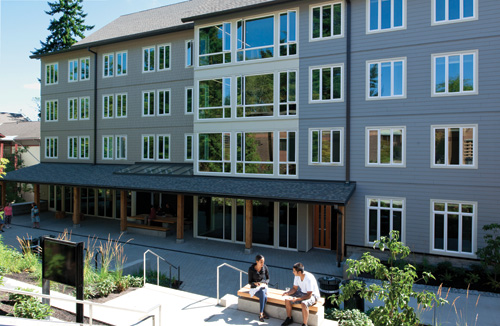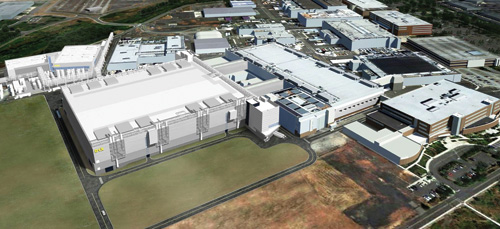 Post recession, Oregon’s construction and building industry is a tentative mix of highs and lows.
Post recession, Oregon’s construction and building industry is a tentative mix of highs and lows.
BY JON BELL
One of the brightest spots in Oregon’s construction industry over the past two years: Intel’s $3 billion D1X fab, which has created thousands of construction jobs. Just as work was winding down on this phase, the company announced plans for a massive second phase similar in scope to the first one and set to kick off in 2013.// Rendering by Intel |
68,800: Construction jobs in Oregon in September 2012 |
Over the past three and a half years, John Mohlis didn’t receive a single phone call from any company interested in learning about the capacity of Oregon’s construction workforce. As executive secretary of the Oregon State Building and Construction Trades Council, Mohlis had been used to getting such calls during headier economic days when companies considered building here, so the long silence was telling.
But in the past few months, Mohlis’ phone has started ringing again. Not off the hook, but a handful of firms have called about the manpower here should they choose Oregon from their short list of prospective project sites.
“Out of those four or five calls, who knows how many of those projects we might get,” Mohlis says, “but when the phone’s not ringing at all, you don’t get any of them. So that’s encouraging.”
All around the Beaver State, there are subtle signs that the proverbial phones have slowly begun to ring again. Yesterday’s condominium boom has been overshadowed by new apartment projects. Colleges and universities all seem to have student housing and other projects freshly opened or in the works. The massive, $133 million remodel of the Edith Green-Wendell Wyatt federal building and construction of the $160 million Collaborative Life Sciences Building at Oregon Health & Science University have kept some Portland firms humming. And a certain high-tech giant in Hillsboro has by itself boosted the state’s employment numbers with the construction of a single new plant.
Elsewhere, however, the scene still struggles. Mohlis says without the Intel fab in Hillsboro, construction unemployment around Portland would probably be averaging about 25%. A wave of publicly funded projects, approved back when times weren’t so tight, is coming to a close, and once-grandiose plans for destination resorts throughout Central Oregon have been exponentially scaled back.
The result is a construction environment that may be getting back to work, but one that has seen better days.
“The construction industry is pretty much still in a recession,” says Bart Eberwein, executive vice president of Hoffman Construction Co. in Portland. “We are all missing the good old days, but there is work out there that’s keeping us alive.”
Commercial and industrial
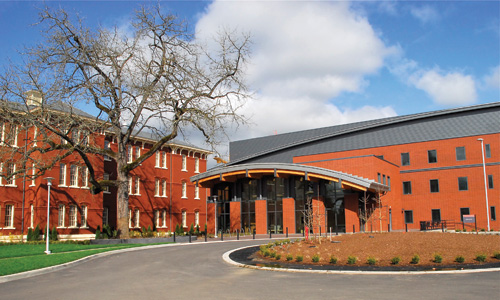 |
Above: Renovation of the 1883 Oregon State Hospital in Salem went along with construction of a new hospital, completed in 2011. Two prisons, as well as a second hospital, will also be built on a site in Junction City.// Photo courtesy Oregon State Hospital Replacement ProjectBelow: Although major medical construction may be slowing, the sector has been on a good run. Construction of Kaiser Permanente’s Westside Medical Center in Hillsboro created 2,000 construction jobs.// Photo by Sierra Breshears |
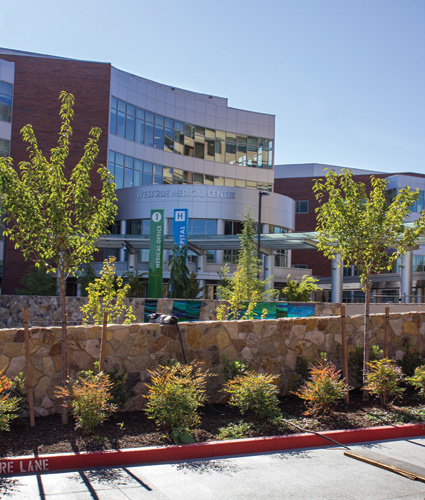 |
When the economy crashed in 2008, commercial and industrial construction all but dried up as companies shifted into austerity mode and made do with what they had.
Not Intel.
Oregon’s largest private employer instead announced two years ago that it would build a $3 billion fab in Hillsboro. Known as D1X and scheduled for completion in 2013, the project, along with upgrades to facilities in Oregon and Arizona, was expected to create close to 8,000 U.S. construction jobs.
“Intel is the one wildcard in our home market that really impacts the trades here,” says Kelly Saito, president of Portland-based Gerding Edlen. “They can create an entire market with just one building.”
The company did just that again in late October when it announced plans for another massive round of new construction in Hillsboro that will add an extension to the D1X development fab, an office building, a manufacturing-support building and a multi-story parking garage. Two years worth of construction should kick off in 2013.
Intel’s construction impact reaches far beyond the new facility as well. An expanded Intel presence and 1,000 new full-time jobs will also draw associated vendors and high-tech firms, many of whom will need new or renovated places to work and live.
But not everyone has an Intel, and the action’s been a little slower elsewhere.
In Southern Oregon, Kelsy Ausland, president of Medford development firm Ausland Group, sees a small uptick in private projects. Even if it’s just a 70-stall parking lot outside a corporate office, it’s still a sign that business and employment is picking up.
“Two years ago, people weren’t investing in those kinds of projects,” she says. “Now they’re starting to.” But the Coast and most of the rural areas in the state “are really hurting for construction work,” says Mohlis.
One exception: data centers. Technology companies from Apple to Yahoo have been building data centers in Central Oregon and the Columbia Gorge in recent years. The latest: a 62,000-square-foot addition to one of Facebook’s two 332,000-square-foot Prineville data centers. Those projects employed roughly 250 construction workers every day they were being built. The social-media giant also has land for a third building as large as the first two should demand require it, says company spokesman Lee Weinstein.
Education, medical
Edna Holmes Hall at Lewis & Clark in Portland is one of many examples of Oregon colleges building more housing to accommodate a growing student population.// Photo courtesy Lewis & Clark College/Robert Reynolds |
Talk to almost any major construction firm in Oregon these days, and just about all of them have a recent student housing project in their portfolio. Hoffman? University of Oregon’s $71.5 million East Campus residence hall. Walsh Construction? Portland State University’s $90 million University Pointe at College Station and Lewis & Clark College’s $8.4 million Edna Holmes Hall. Adroit Construction of Ashland? Southern Oregon University’s $40 million Cascade dormitory. The list goes on.
“Student housing, whether it’s owned institutionally or privately, is certainly a strong sector and has maintained strength through the downturn,” says Saito of Gerding Edlen, which managed a recent $20 million housing project for Lane Community College.
Part of the reason is simple supply and demand. Additionally, some institutions, short on capital, have turned to a partnership approach with private developers. At PSU, for example, the school leased the land for University Pointe to Texas developer American Campus Communities, which then built and owns the building.
Other education projects, from the $6 million seismic retrofit of SOU’s Churchill Hall by Ausland Group to a $10 million renovation of the University of Portland’s library by Todd Construction of Tigard, have kept builders busy as well. Similarly, local bond measures have led to K-12 building projects for some firms, including Todd, which will build Portland’s $37 million Parkrose Middle School in the coming year. And Oregon State University’s plans to expand its Cascades campus in Bend into a four-year university by 2015 likely will require some new construction or renovation just down the road.
Yet the bright education spot may be dimming. For starters, the Legislature only approved $265 million in capital construction funds for the 2011-13 biennium, down from $758 million in 2009-11. Along the same lines, earlier bond measures for schools, fire stations and other public projects are winding down.
“I think we’re seeing the tail end of what was passed when the economy was still pretty good,” says Ausland. “We may be cycling out of those institutional projects.”
Like education projects, health care construction has been strong over the past few years. Smaller clinics as well as large hospitals — such as the $9.3 million Curry Medical Center in Brookings and Kaiser Permanente’s under-construction, $344 million Westside Medical Center in Hillsboro —have kept crews working steadily. The state, too, is building two new hospitals to the tune of $458 million to replace the existing Oregon State Hospital.
But all this could be tapering off.
“There may be more of that that’s in the rearview mirror,” says Eberwein. “Most of the big guys did a lot of the big projects, and now they’re catching their breath. Generally speaking, even though it never really goes away, health care is taking a breath.”
Part of that has to do with the slower economy, but part may also be the uncertainty related to health care reform.
“In health care,” says Brent Schafer, president of Todd Construction, which built the hospital in Brookings, “it seems like people are being kind of cautious about the election and health care reform, and waiting to see how all that is going to shake out.”
Condos, apartments
 |
The resort boom went bust in Central Oregon, but it’s slowly waking up. R&H Construction has been working at Black Butte Ranch outside of Sisters, where it built the Glaze Meadow recreation center.Moribund. Almost dead. Not even on the radar. It should come as no surprise that this is how builders describe the state of the condominium market. Hugely overbuilt during the real-estate boom, the condo market from Portland to Bend and beyond has remained largely dormant for the past few years as prospective buyers, spooked by the new age of lending requirements, turned toward rentals. |
“We are still not at a stage where condos make any sense,” says Gerard Mildner, director for PSU’s Center for Real Estate.
In their stead is a rising tide of in-fill apartment projects. No fewer than 500 units were expected to be added to downtown Portland by the middle of this year, with more on the way. A proposed “superblock” project in the Lloyd District could add almost 800 more apartments and 50,000 square feet of retail space in four towers, and Zidell Marine Corporation has announced plans to develop 30 waterfront acres near Portland’s Ross Island with potentially everything from residential units to a corporate campus.
Steve Galash, vice president for R&H Construction Co., says a condo scenario similar to Portland’s has played out in Bend.
“Condos were going nuts. A lot of developers just made their projects pencil by adding a condo component,” he says. “Then they all kind of fell together. The result has been that the apartment market here, like in other places, is starting to get more popular.”
In Portland, at least, there is already concern that the apartment market has gotten too popular and that it may be headed the way of the condo tower.
“The apartment market has been in a bit of a boom over the past year or two,” says Kurt Schultz, a principal with SERA Architects, which has designed several apartment complexes in Portland. “But there are some who think we’re already at the peak of the market.”
Resorts, hospitality
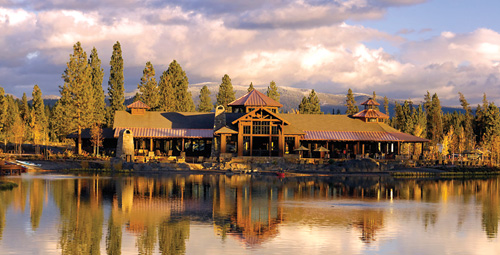 |
R&H Construction also recently built the Lake House at Caldera Springs, a resort development slowly in the works on 400 acres near Sunriver outside of Bend. |
After the housing bust and recession, when the dust finally settled over the destination resort scene in Central Oregon, there were unfinished golf courses baking in the desert sun, thousands of approved home lots sitting vacant and a handful of planned resorts that went bankrupt.
“The resort community had a huge shakeup,” says Galash, of R&H, which has done its fair share of resort work at places such as Black Butte Ranch and Caldera Springs.
The sector has long since hit bottom, and it’s been slow to crawl back up. Remington Ranch and Thornburgh Resort filed for bankruptcy in the past two years; others, like Tetherow golf resort, remain in limbo, although there are signs of a gradual turn.
“Lots in these places have been recapitalized or are no longer in the hands of the folks who started them,” says Saito of Gerding Edlen. “That’s the first step.”
Portland developer Joe Weston, who’s owned land at Tetherow since 2007, plans to develop overnight facilities there, which Galash says bodes well, if not for the larger resort scene, then at least for Tetherow.
Elsewhere, other builders have seen some healthy returns in other areas of hospitality.
“We’re doing a number of new hotels and renovations for different developers,” says SERA’s Schultz. “Slowly and quietly, we’ve seen a comeback in hospitality” in Portland and elsewhere around the state.
Ausland Group is currently renovating two Holiday Inns in Grants Pass and Roseburg, and similar to R&H, which completed an expansion for Deschutes Brewery in Bend, the firm just finished up a 28,000-square-foot brewery for Ashland’s Caldera Brewing.
“For a brewery to be expanding like that,” says Ausland, “we think that’s a good sign of what’s to come in the economy.”
Jon Bell is a Portland-based journalist who writes frequently for OB. He can be reached at [email protected].


